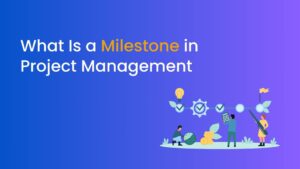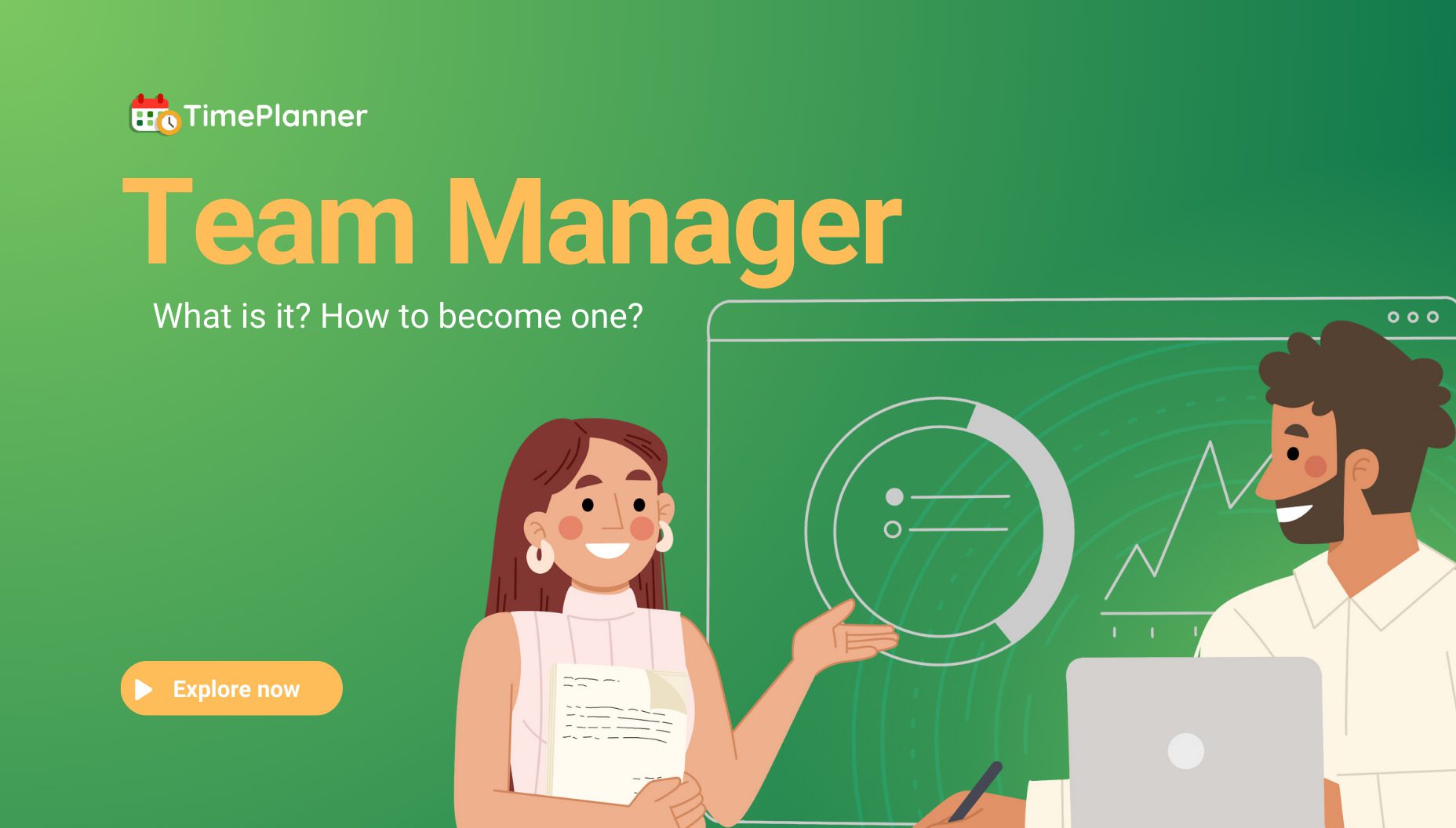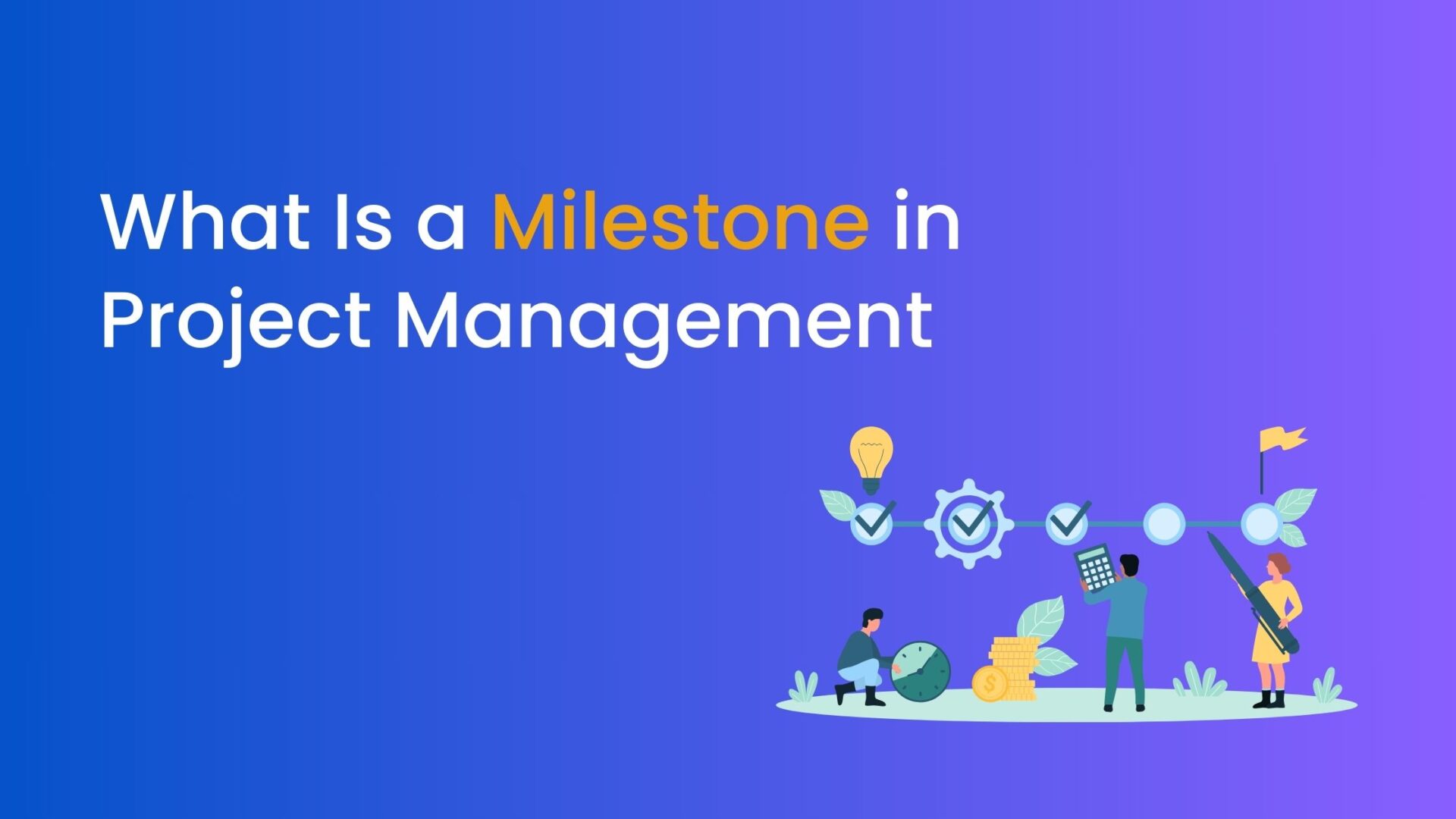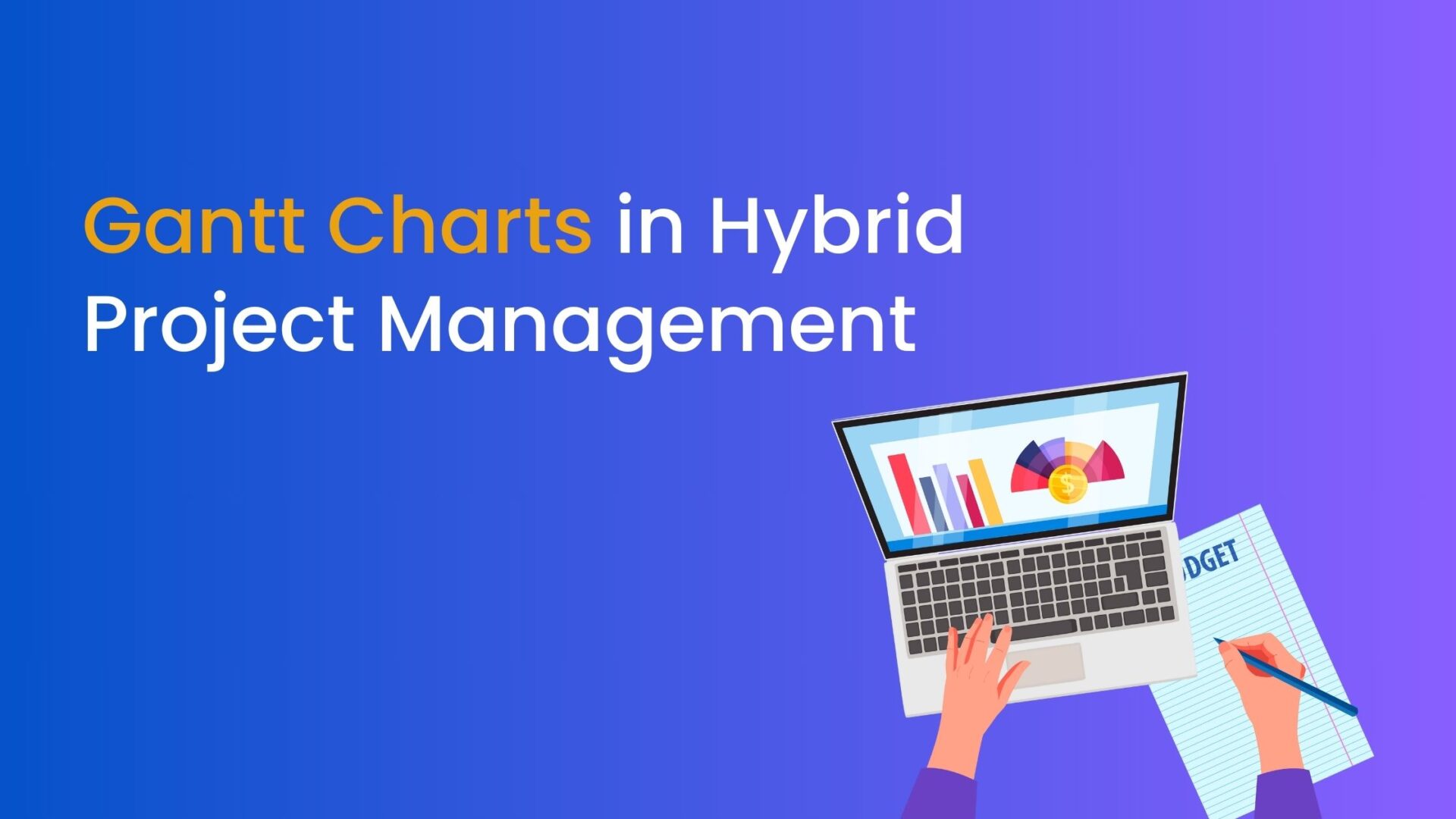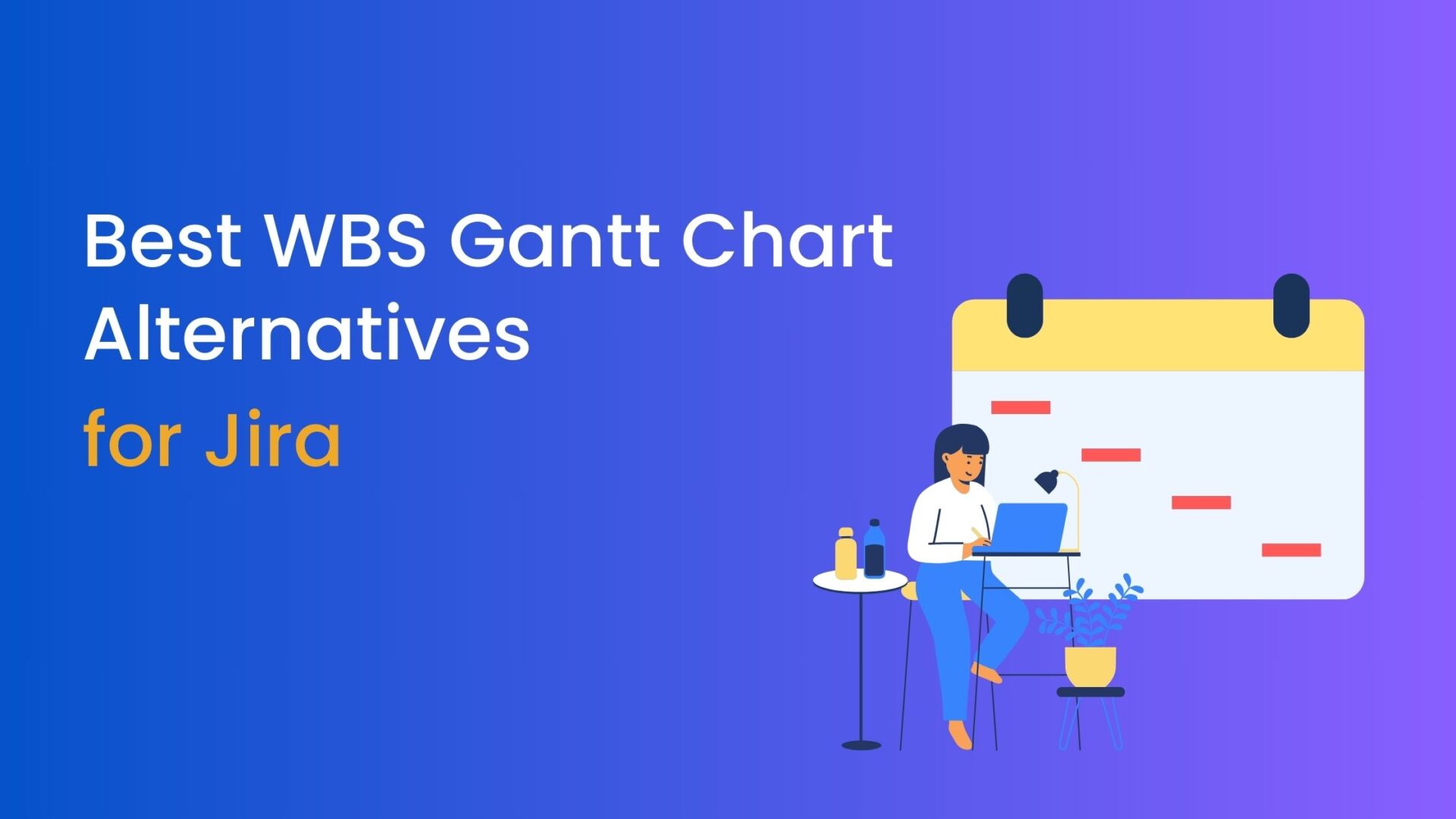Welcome to our beginner-friendly guide to project management! Whether you’re just starting out or looking to refresh your knowledge, this glossary will help you navigate the world of project management with ease. We’ve broken down essential terms from A to Z, using simple language to make understanding a breeze. Let’s dive in!
Project Management Terms
A – Project Management Terms
Agile Methodology: A flexible project management approach emphasizing iterative development and collaboration.
Agile project management: Draws from concepts of agile software development. Agile approaches focus on teamwork, collaboration, and stakeholder involvement, as well as the use of iterative development methods.
Agile software development: Originates from the Agile Manifesto, a set of principles that emphasizes meeting changing requirements through collaborative development and making ongoing improvements through iteration. It stresses the importance of being reactive to rapid changes in external environments.
Allocation: Distributing resources such as time, budget, and personnel to different tasks within a project.
Assumptions: Presumed facts or conditions guiding planning without solid proof.
Approval: Official permission or endorsement needed to proceed with a project or task.
Accountability: Taking responsibility for actions and ensuring tasks are completed as agreed upon.
Action Item: Specific tasks or actions needed to advance the project.
Acceptance Criteria: Conditions or requirements for a deliverable to be considered complete and satisfactory.
Agenda: List of topics or items to be discussed during a meeting or project activity.
Assessment: Evaluation or analysis of project progress, performance, risks, or other factors.
Assurance: Providing confidence or certainty that project objectives will be achieved.
Activity-On-Arrow (AOA): Network diagram where arrows represent activities and nodes represent events or milestones.
Activity-On-Node (AON): Network diagram where nodes represent activities and arrows illustrate logical relationships between them.
Actual Cost of Work Performed (ACWP): Total cost incurred for work done in a given period.
Adaptive Project Framework (APF): Approach rejecting traditional, linear project management in favor of flexibility and changing requirements.
Aggregate Planning: Strategy using demand forecasts to manage scheduling and planning for project activities in advance.
Agile Software Development: Originating from the Agile Manifesto, stresses collaborative development and iterative improvement.
Analytical Estimating: Computing project time and cost estimates by preparing estimates for each activity and summing them.
Arrow Diagramming Method (ADM): Method constructing network diagrams using arrows for activities and nodes for events or milestones.
Assurance: Providing confidence or certainty that project objectives will be achieved.
Assumption Log: Documenting and tracking assumptions made during project planning and execution.
B – Project Management Terms
Budget: The financial plan for a project, detailing the allocation of resources such as money, time, and personnel.
Baseline: A reference point used to measure project progress by comparing actual performance to the original plan.
Backlog: A prioritized list of tasks or requirements yet to be completed, often used in Agile methodologies.
Benchmarking: Comparing project processes or performance metrics against industry standards or best practices to identify areas for improvement.
Brainstorming: A creative technique used to generate ideas or solutions through group discussion and collaboration.
Business Case: A document that justifies the need for a project by outlining its objectives, benefits, costs, and risks.
Burn Rate: The rate at which project budget or resources are being used up over time.
Balance Scorecard: A strategic planning and management system that aligns business activities to the vision and strategy of the organization, typically through four perspectives: financial, customer, internal business processes, and learning and growth.
Business Requirements: The detailed needs or expectations of the stakeholders that the project must satisfy to achieve its objectives.
Benefit-Cost Ratio (BCR): A ratio used to determine the feasibility of a project by comparing the benefits derived from the project to its costs.
Budget at Completion (BAC): The total budget allocated to a project, representing the sum of all planned costs.
Bottom-Up Estimating: Estimating technique that involves breaking down project activities into smaller, more manageable components and estimating each component individually before aggregating them to derive the total estimate.
Burn Down Chart: A graphical representation of the remaining work versus time in an Agile project, used to track progress and forecast the project’s completion date.
Buffer: Extra time or resources allocated to accommodate uncertainties or delays in a project schedule or budget.
Benefit Management Plan: A document that outlines how the expected benefits of a project will be identified, measured, and realized.
Business Value: The quantifiable benefit or worth that a project delivers to the organization, such as increased revenue, cost savings, or improved customer satisfaction.
Business Process Reengineering (BPR): The analysis and redesign of existing business processes to achieve significant improvements in performance, efficiency, and effectiveness.
Build-Measure-Learn: An iterative cycle used in Agile and Lean methodologies where a product or solution is built, its performance is measured, and the insights gained are used to inform future iterations.
C – Project Management Terms
Change Management: The process of planning, implementing, and controlling changes to project scope, schedule, or resources in a systematic manner.
Critical Path: The longest sequence of dependent tasks in a project schedule, determining the shortest possible duration for completing the project.
Communication Plan: A documented strategy outlining how project information will be communicated to stakeholders, including frequency, channels, and responsible parties.
Contingency Plan: A predefined course of action to be implemented in response to identified risks or unexpected events that may impact the project.
Cost Management: The process of estimating, budgeting, and controlling costs throughout the project lifecycle to ensure it stays within the approved budget.
Constraints: Limitations or restrictions that affect the execution of a project, such as time, budget, resources, or scope.
Critical Chain Method (CCM): A project scheduling technique that focuses on managing resource dependencies and buffers to protect the project from delays.
Change Control Board (CCB): A designated group responsible for reviewing, evaluating, and approving or rejecting proposed changes to the project.
Change Request: A formal proposal to modify project scope, schedule, or resources, submitted for approval to the change control board (CCB).
Constraints: Limitations or factors that restrict the options or actions available in a project, such as time, budget, resources, or quality requirements.
Control Chart: A graphical representation of process variation over time, used to monitor and control the quality of project deliverables.
Cost Performance Index (CPI): A measure of cost efficiency, calculated by dividing the earned value by the actual cost incurred.
Change Log: A record of all approved changes to the project scope, schedule, or resources, documenting the rationale, impact, and implementation details.
Conflict Resolution: The process of addressing and resolving disagreements or disputes among project stakeholders to maintain collaboration and progress.
Contingency Reserve: An amount of time or budget allocated to account for uncertainties or risks that may impact the project.
Control Account Manager (CAM): The individual responsible for managing and reporting on the performance of a control account within the project.
Cost Baseline: The approved budget for the project, used as a reference point for comparing actual costs and monitoring cost performance.
Change Management Plan: A document that outlines the procedures and responsibilities for managing changes to the project scope, schedule, and resources.
Critical Success Factor (CSF): Key factors or conditions that must be achieved for the project to be considered successful, often aligned with organizational objectives.
D – Project Management Terms
Deliverable: A tangible or intangible output produced as a result of project activities, typically delivered to meet specific requirements and expectations.
Dependencies: The relationships between project tasks or activities that determine their sequence and interdependence.
Duration: The amount of time required to complete a specific project task or activity, often expressed in hours, days, or weeks.
Data Analysis: The process of examining, interpreting, and drawing conclusions from project data to inform decision-making and improve project performance.
Decision Matrix: A systematic tool used to evaluate and prioritize alternatives based on predefined criteria, facilitating informed decision-making.
Documentation: The written records and artifacts produced throughout the project lifecycle, including plans, reports, logs, and manuals.
Defect: Any deviation from the specified requirements or standards, often requiring corrective action to rectify and ensure product quality.
Dependencies Management: The process of identifying, analyzing, and managing the relationships and dependencies between project tasks or activities.
Dependency Relationship: The logical connection between two or more project tasks or activities, where the start or completion of one task depends on the start or completion of another.
Dashboard: A visual display of project data, metrics, and key performance indicators (KPIs) used to monitor project progress and communicate status to stakeholders.
Decision Tree: A graphical representation of decision alternatives, potential outcomes, and probabilities used to evaluate options and determine the best course of action.
E – Project Management Terms
Earned Value Management (EVM): A project performance measurement technique that integrates scope, schedule, and cost data to assess project progress and forecast future performance.
Estimation: The process of predicting or approximating the time, cost, resources, or effort required to complete project activities or deliverables.
Escalation: The process of raising issues, concerns, or conflicts to higher levels of management or authority for resolution when they cannot be resolved at lower levels.
Execution: The phase of the project lifecycle where project plans are put into action, project work is performed, and project deliverables are produced.
Expert Judgment: A technique for gathering input, insights, or advice from individuals or groups with specialized knowledge, skills, or experience relevant to the project.
Efficiency: The ratio of output to input, reflecting the effectiveness of utilizing resources to produce desired project outcomes or deliverables.
Enterprise Project Management (EPM): An organizational approach to managing multiple projects or programs holistically, aligning them with strategic objectives and optimizing resource allocation and utilization.
End User: The individual or group who will ultimately use or benefit from the project’s deliverables, products, or services upon project completion.
Early Finish Date (EF): The earliest possible date a project activity or task can be completed based on its schedule constraints and dependencies.
Earned Value (EV): The measure of the value of work performed to date, calculated by multiplying the percent complete of project activities by their planned value (PV).
Estimate to Complete (ETC): The projected cost or effort required to complete the remaining work in a project, based on current performance and future expectations.
Estimate at Completion (EAC): The projected total cost or effort required to complete the project, calculated based on current performance and future forecasts.
External Stakeholders: Individuals, groups, or entities outside of the project team who have an interest or influence in the project’s outcomes or deliverables.
Execution Phase: The phase of the project lifecycle where project plans are implemented, monitored, and controlled to produce deliverables and achieve project objectives.
Exception Report: A document or communication that highlights significant deviations, variances, or issues in project performance, requiring attention or action from project stakeholders.
Earned Schedule (ES): A project management metric that extends earned value management (EVM) principles to schedule performance, providing insights into schedule progress and forecasting.
Enterprise Environmental Factors (EEFs): External factors or conditions that influence or constrain the project’s execution, such as organizational culture, policies, regulations, or market conditions.
Earned Value Analysis (EVA): A quantitative analysis technique used to assess project performance and progress by comparing earned value (EV) to planned value (PV) and actual costs (AC).
Expertise: Specialized knowledge, skills, or experience possessed by individuals or groups that contribute to the successful execution of project tasks or activities.
Estimation Accuracy: The degree of closeness between estimated values and actual results, reflecting the reliability and precision of estimation techniques used in project planning.
Enterprise Risk Management (ERM): A systematic approach to identifying, assessing, and managing risks across the organization, including projects, to enhance decision-making and protect value.
F – Project Management Terms
Feasibility Study: An assessment conducted during the project initiation phase to determine the practicality, viability, and potential success of the project.
Functional Requirements: The specific capabilities, features, or functions that a project deliverable must possess to satisfy user needs and achieve project objectives.
Float: The amount of time by which an activity or task can be delayed without affecting the project’s overall duration or completion date.
Forecasting: The process of predicting or estimating future project outcomes, trends, or events based on historical data, trends, or expert judgment.
Formal Acceptance: The official approval or sign-off by stakeholders indicating that project deliverables or outputs meet their specified requirements and expectations.
Fast Tracking: A project schedule compression technique that involves performing activities or tasks in parallel instead of sequentially to expedite project completion.
Funding: The financial resources allocated or made available to support the execution of a project, including budgetary provisions, grants, or sponsor contributions.
Functional Manager: A manager responsible for overseeing a specific department, team, or functional area within the organization, often providing resources and personnel to support projects.
FMEA (Failure Mode and Effects Analysis): A risk management technique used to identify, assess, and mitigate potential failure modes or defects in products, processes, or systems.
Follow-Up: The process of monitoring and tracking project activities, tasks, or issues to ensure they are addressed, resolved, or completed as planned.
Facilitation: The process of guiding and leading group discussions, meetings, or workshops to achieve specific objectives or outcomes.
Flowchart: A visual representation of the sequence of steps or activities in a process, often used to analyze, document, or improve process efficiency.
Financial Management: The process of planning, budgeting, allocating, monitoring, and controlling financial resources to ensure the successful execution and completion of a project within budgetary constraints.
FMEA (Failure Modes and Effects Analysis): A structured approach to identifying and assessing potential failure modes, their causes, and their effects on project objectives, products, or processes, and developing preventive or corrective actions to mitigate risks.
Fixed Price Contract: A contractual agreement between a buyer and a seller where the seller agrees to deliver specified products, services, or results for a predetermined price, regardless of actual costs incurred.
Facilitated Workshop: A structured meeting or session led by a facilitator to gather input, ideas, or consensus from stakeholders or team members on specific project issues, objectives, or deliverables.
Flow Control: The process of managing and regulating the movement of project activities, tasks, or resources to ensure smooth and efficient project execution and delivery.
G – Project Management Terms
Gantt Chart: A visual representation of project tasks or activities plotted against time, showing their start dates, durations, and dependencies, often used for scheduling and tracking project progress.
Gate Review: A formal meeting or checkpoint held at key milestones in a project to assess progress, evaluate deliverables, and make decisions about proceeding to the next phase.
Goal: A broad and overarching statement that defines the desired outcome or purpose of the project, providing direction and focus for project activities.
Group Creativity Techniques: Structured methods or approaches used to stimulate and harness creative thinking, problem-solving, and idea generation within project teams or stakeholders.
Gold Plating: Adding unnecessary or excessive features, functionality, or quality to project deliverables beyond what is required or specified, often resulting in increased costs and schedule delays.
Governance: The system of policies, processes, and procedures established to guide and control the management and execution of projects within an organization, ensuring alignment with strategic objectives and compliance with standards and regulations.
Gap Analysis: A technique used to identify discrepancies or gaps between current performance and desired outcomes, enabling the development of strategies to bridge the gap and achieve project objectives.
Group Decision-Making: The process of making decisions within a team or group, often involving consensus-building, negotiation, and compromise to reach agreement on project issues or options.
Good Practice: A recognized and proven method, technique, or approach that is considered effective and efficient in achieving project objectives and delivering high-quality results.
Graphical Evaluation and Review Technique (GERT): A project scheduling and analysis technique that allows for modeling of complex dependencies, uncertainties, and conditional probabilities using network diagrams.
Guidelines: Recommended practices, principles, or standards that provide direction and guidance for conducting project activities or tasks effectively and efficiently.
Grading: The process of assigning scores, ratings, or evaluations to project deliverables, performances, or outcomes based on predefined criteria or standards.
Gantt Chart Software: Computer-based tools or applications used to create, edit, and manage Gantt charts, facilitating project scheduling, tracking, and communication.
H- Project Management Terms
I- Project Management Terms
Integration Management: The process of coordinating and harmonizing various project management processes, activities, and components to ensure seamless execution and achievement of project objectives.
Issue: Any concern, problem, or discrepancy that arises during the course of a project and requires attention or resolution to prevent negative impacts on project outcomes or performance.
Impact Analysis: An assessment of the potential effects or consequences of a change, risk, or event on project objectives, scope, schedule, budget, or quality, helping to inform decision-making and mitigation strategies.
Initiation Phase: The first phase of the project lifecycle, where the project is formally authorized, defined, and launched, involving activities such as project charter development, stakeholder identification, and initial planning.
Iterative: A repetitive or cyclical approach to project management or development, where work is performed in incremental stages or iterations, allowing for continuous improvement, feedback, and adaptation.
Issue Log: A documented record or register of project issues, including descriptions, statuses, priorities, and assigned responsibilities, used for tracking, monitoring, and resolving issues throughout the project lifecycle.
Impact Matrix: A structured tool or technique used to assess and prioritize the potential impacts of identified risks or changes on project objectives, enabling informed decision-making and risk response planning.
Independent Variable: In statistical analysis or modeling, a variable that is manipulated or controlled to observe its effect on other variables, providing insights into cause-and-effect relationships within the project context.
Integration Management Plan: A document that outlines the approach, processes, and activities for integrating project components, processes, and stakeholders throughout the project lifecycle, ensuring alignment with project objectives and requirements.
Influencer: An individual or group with the ability to affect decisions, actions, or opinions within the project or organization, often possessing informal authority or expertise.
Impact Effort Matrix: A tool used to assess and prioritize project tasks, changes, or requirements based on their potential impact and effort required for implementation, guiding resource allocation and scheduling decisions.
Incident Management: The process of identifying, managing, and resolving unplanned or unexpected events or disruptions that affect project activities, resources, or deliverables.
ISO 10006 – A set of quality-management guidelines for projects. It is a standard created by the International Organization for Standardization.
K – Project Management Terms
Key Performance Indicator (KPI): Quantifiable metrics used to evaluate the performance and success of a project, process, or organization against predefined objectives or goals.
Knowledge Management: The process of capturing, storing, sharing, and utilizing knowledge and information within an organization to improve decision-making, problem-solving, and innovation.
Kickoff Meeting: An initial meeting held at the beginning of a project to officially launch the project, communicate objectives, roles, and responsibilities, and establish expectations with stakeholders and team members.
Kaizen: A Japanese term meaning “continuous improvement,” referring to the philosophy or practice of making small, incremental changes or adjustments to processes, systems, or practices to achieve better results over time.
Kanban: A visual project management method that uses cards or boards to represent tasks or work items, allowing teams to visualize workflow, identify bottlenecks, and optimize productivity.
Key Stakeholder: An individual, group, or entity with a significant interest, influence, or impact on the project objectives, outcomes, or success, requiring proactive engagement and communication throughout the project lifecycle.
Kerberos: A network authentication protocol used to verify the identities of users and services in a distributed computing environment, ensuring secure access to resources and data.
L – Project Management Terms
Lag/Lag time – A necessary break or delay between activities.
Leadership: The ability to inspire, guide, and motivate individuals or teams to achieve common goals and objectives within a project or organization.
Lean Project Management: A project management approach that focuses on maximizing value and minimizing waste by optimizing processes, resources, and activities to deliver customer-centric outcomes efficiently.
Lifecycle: The series of phases or stages that a project progresses through from initiation to closure, typically including initiation, planning, execution, monitoring and controlling, and closure.
Lessons Learned: Insights, experiences, or knowledge gained from past projects or experiences that can be applied to current or future projects to improve processes, performance, and outcomes.
Logical Framework (Logframe): A project management tool used to define and structure project objectives, activities, outputs, and outcomes, providing a framework for planning, monitoring, and evaluation.
Lead Time: The amount of time required to complete a task or deliverable from the initiation to the completion, including preparation, execution, and waiting time.
Line of Balance (LOB): A scheduling technique used in construction projects to manage repetitive activities or tasks with similar durations and dependencies, ensuring efficient resource allocation and workflow.
Level of Effort (LOE): A type of project activity that requires a consistent level of effort over a period of time, rather than a specific deliverable or outcome, such as project management or support activities.
Long-Term Planning: The process of setting strategic goals, objectives, and initiatives for the future direction and growth of the organization, aligning with its mission, vision, and values.
Late Start (LS): In project scheduling, the latest possible start date for an activity without delaying the project’s overall completion date, considering dependencies and constraints.
Lessons Learned Report: A formal document or report compiled at the end of a project, summarizing key insights, experiences, successes, challenges, and recommendations for future projects.
Logical Relationship: A dependency or relationship between project activities that determines their sequencing and order, such as finish-to-start, start-to-start, finish-to-finish, or start-to-finish.
Lean Six Sigma: A methodology that combines principles of Lean Management and Six Sigma to optimize processes, reduce waste, and improve quality and efficiency in project management and operations.
Lifecycle Management: The process of managing and overseeing the entire lifecycle of a project or product, from inception to retirement or disposal, ensuring alignment with organizational goals and objectives.
Late Finish (LF): In project scheduling, the latest possible finish date for an activity without delaying the project’s overall completion date, considering dependencies and constraints.
Local Area Network (LAN): A computer network that connects devices within a limited geographical area, such as an office building or campus, facilitating communication, file sharing, and resource access.
Lead Time Forecasting: A predictive analysis technique used to estimate the amount of time required to fulfill customer orders or deliver products or services, informing production and inventory planning.
M – Project Management Terms
Milestone: A significant event or achievement within a project, often used to mark key points in the project timeline, such as the completion of major deliverables or the achievement of key objectives.
Milestone Schedule: A timeline or plan that identifies and schedules project milestones, providing a visual representation of key project events and progress checkpoints.
Matrix Organization: A project management structure where team members report to both functional managers and project managers, combining aspects of functional and projectized organizations.
Monitoring and Controlling: The project management processes of tracking, reviewing, and regulating project performance, activities, and outcomes to ensure adherence to plans and achievement of objectives.
Mitigation: The process of identifying, assessing, and implementing proactive measures or actions to reduce the likelihood or impact of risks on project objectives.
Mind Mapping: A visual brainstorming technique used to generate and organize ideas, concepts, or information in a hierarchical or non-linear format, facilitating creativity, analysis, and decision-making.
Management Reserve: An allocated budget or contingency set aside to cover unforeseen or emergent work within a project, providing a buffer against cost overruns or scope changes.
Monte Carlo Simulation: A quantitative risk analysis technique that uses probabilistic models and random sampling to simulate project outcomes and assess the likelihood of achieving objectives.
Motivation: The factors, incentives, or drivers that influence individual or team behavior, engagement, and performance within a project or organization.
Master Schedule: A comprehensive schedule that integrates all project activities, tasks, and resources into a single timeline, providing an overview of the project’s scope, duration, and dependencies.
Methodology: A systematic approach, framework, or set of practices used to plan, execute, and manage projects, providing guidelines and standards for project management processes and activities.
Metrics: Quantifiable measures used to assess, track, and evaluate project performance, progress, and outcomes against predefined objectives, benchmarks, or standards.
Margin: The difference between the actual value or cost and the minimum acceptable value or cost, providing a buffer or allowance for variations or uncertainties within a project.
Mock-Up: A prototype or model that represents the appearance, functionality, or features of a product, system, or deliverable, allowing stakeholders to visualize and provide feedback before final implementation.
Multi-Criteria Decision Analysis (MCDA): A decision-making technique that considers multiple criteria, factors, or alternatives to evaluate and prioritize options, facilitating informed decision-making in complex situations.
MoSCoW – The MoSCoW prioritization method allows project managers to communicate with stakeholders on the importance of delivering specific requirements. The acronym indicates four categories of priority and importance for project requirements. Each requirement is prioritized as a “must have,” a “should have,” a “could have,” or a “won’t have.”
Monte Carlo simulation/technique – Monte Carlo simulation is a computer-based technique that performs probabilistic forecasting of possible outcomes to facilitate decision making. For each possible decision — from the most high-risk to the most conservative — a Monte Carlo simulation provides decision makers with a range of possible outcomes and the likelihood that each will occur.
Most Likely Duration – An estimate of the most probable length of time needed to complete an activity. It may be used to compute expected activity duration through a technique called three-point estimation.
Murphy’s Law – Murphy’s Law — “What can go wrong will go wrong.” — is cited in project management as a reason to plan adequately for contingencies.
N – Project Management Terms
Network Diagram: A visual representation of project activities and their dependencies, usually depicted as nodes (circles or boxes) connected by arrows to show the sequence and relationships between tasks.
Negotiation: The process of reaching agreements or resolving conflicts through discussion, compromise, and mutual understanding among project stakeholders to achieve mutually beneficial outcomes.
Nominal Group Technique (NGT): A structured brainstorming technique used to generate and prioritize ideas or solutions within a group setting, ensuring equal participation and minimizing groupthink.
Needs Assessment: The process of identifying, analyzing, and prioritizing the requirements, expectations, and preferences of stakeholders to determine project scope, objectives, and deliverables.
Non-Disclosure Agreement (NDA): A legal contract that prohibits the disclosure of confidential information shared between parties, protecting sensitive data and intellectual property within the project or organization.
Normal Distribution: A statistical distribution pattern characterized by a bell-shaped curve, where data points cluster around the mean (average) value, providing insights into the variability and likelihood of outcomes within a project.
Node: In a network diagram, a node represents a specific point in time, such as the start or finish of an activity, milestone, or event, indicating the sequence and dependencies between project tasks.
Nominal Group: A group of individuals selected to participate in the Nominal Group Technique (NGT) process, typically comprising stakeholders, experts, or representatives with diverse perspectives and expertise.
Near-Critical Path: A sequence of activities or tasks in a project network diagram that has a slight buffer or float, meaning it is almost critical but can still be delayed without delaying the project’s overall completion.
Non-Functional Requirements: Requirements that specify criteria related to the performance, usability, security, or quality attributes of a project deliverable, rather than its specific features or functionalities.
Network Logic: The logical relationships or dependencies between project activities, represented by arrows connecting nodes in a network diagram to determine the sequence and flow of work.
Negative Stakeholder: A stakeholder who opposes or is adversely affected by the project’s objectives, outcomes, or activities, requiring proactive engagement and management to address concerns and mitigate resistance.
Net present value (NPV) – Net present value is a concept that compares the present value of a unit of currency to its inflation-adjusted possible value in the future. It allows organizations to determine the financial benefits, or lack thereof, of long-term projects.
Nonlinear management (NLM) – Nonlinear management refers broadly to management practices which emphasize flexibility, self-organization, and adaptation to changing circumstances. It runs counter to concepts in linear management, which seek to impose structure on organizations. The defining characteristics of nonlinear management include encouragement of out-of-the-box thinking, proactivity in responding to challenges, and flexible working arrangements for employees.
O – Project Management Terms
Objective: A specific, measurable, achievable, relevant, and time-bound goal or target that defines what the project aims to accomplish.
Organizational Structure: The hierarchical arrangement of roles, responsibilities, and reporting relationships within an organization, influencing communication, decision-making, and project management processes.
Organizational Process Assets (OPAs): The policies, procedures, templates, guidelines, and historical data stored within an organization’s knowledge base, used to support project management activities and processes.
Operational Readiness: The state of preparedness or capability of an organization or system to effectively implement and support the deliverables or outcomes produced by a project.
Opportunity: A positive or advantageous event or condition that may arise during the course of a project, offering potential benefits or advantages if capitalized upon effectively.
Outcome: The results, effects, or impacts produced by a project or initiative, often measured against predefined objectives or success criteria to determine project success or failure.
Outsourcing: The practice of contracting or delegating project activities, tasks, or services to external vendors, suppliers, or partners to leverage specialized expertise, resources, or capabilities.
Overallocation: A situation where project resources are assigned more work or tasks than they can realistically complete within the available time or capacity, potentially leading to schedule delays or resource constraints.
Overhead: Indirect costs or expenses incurred by a project that cannot be directly attributed to specific tasks or activities, such as administrative costs, utilities, or facilities maintenance.
Overlap: A scheduling scenario where the start or finish of one project activity occurs simultaneously with or overlaps the start or finish of another activity, impacting resource availability and task sequencing.
Overrun: A situation where actual project costs exceed the budgeted or estimated costs, resulting in cost overages or budget deficits that may require corrective action or financial adjustments.
Operational Dependency: A relationship or linkage between project activities or deliverables and ongoing operational processes, systems, or functions within an organization, influencing project planning and execution.
Organizational Change Management (OCM): The process of planning, implementing, and managing changes to organizational structures, processes, or cultures to support successful project implementation and adoption.
Objective Key Results (OKRs): A goal-setting framework used to define and track objectives and key results within an organization, aligning individual and team efforts with organizational priorities and strategies.
Observational Techniques: Data collection methods that involve direct observation and recording of project activities, behaviors, or interactions to gather insights, identify patterns, or validate assumptions.
P – Project Management Terms
Project Management: The application of knowledge, skills, tools, and techniques to plan, execute, monitor, and control projects effectively and efficiently to achieve project objectives and deliver value to stakeholders.
Project Charter: A formal document that authorizes the initiation of a project, providing a clear understanding of project objectives, scope, stakeholders, and initial constraints, and empowering the project manager to begin project work.
Project Scope: The boundaries or extent of what is included or excluded in a project, defining the deliverables, objectives, and requirements that must be achieved to fulfill stakeholder expectations and satisfy project goals.
Procurement Management: The process of acquiring goods, services, or resources from external suppliers or vendors to meet project requirements, including procurement planning, solicitation, contract negotiation, and vendor management.
Program Management: The coordinated management of a portfolio of related projects and activities to achieve strategic objectives and benefits that individual projects cannot accomplish alone, often involving interdependencies and shared resources.
Project Portfolio: A collection of projects, programs, and initiatives managed by an organization to achieve strategic objectives and deliver value, typically aligned with organizational priorities and resource allocations.
Project Risk: Uncertainty or potential events that may impact project objectives, outcomes, or performance, requiring proactive identification, assessment, and management to minimize negative impacts and maximize opportunities.
Project Lifecycle: The series of phases or stages that a project progresses through from initiation to closure, typically including initiation, planning, execution, monitoring and controlling, and closure.
PERT (Program Evaluation and Review Technique): A project scheduling technique that uses probabilistic estimates and critical path analysis to calculate the expected duration of tasks and identify the critical path in a project network diagram.
Progress Report: A periodic update on project status, progress, accomplishments, and issues, typically prepared for stakeholders to communicate project performance and inform decision-making.
Pareto Principle (80/20 Rule): A concept that states that roughly 80% of effects come from 20% of causes, often applied in project management to prioritize efforts and focus resources on critical tasks or issues.
Product Owner: In Agile project management, a role responsible for representing the voice of the customer, defining and prioritizing product features, and ensuring alignment with stakeholder needs and expectations.
P3 assurance – P3 assurance involves satisfying sponsors and stakeholders that projects, programs, and portfolios are on course to meet performance expectations, fulfill objectives, and meet requirements.
P3 management – P3 management refers collectively to the management of projects, programs, and portfolios.
PEST analysis – A PEST analysis examines how political, economic, social, and technological factors might affect a project.
Phase – A distinct stage in a project life cycle.
Planning poker – A consensus-based estimation technique. It attempts to avoid the anchoring effect — where the first estimate forms a baseline for all subsequent estimates — by having project team members make estimates simultaneously and discuss their estimates until they reach agreement.
Portfolio, program, and project management maturity model (P3M3) – The P3M3 assesses organizational performance in portfolio, program, and project management via a set of key process areas (KPAs). Like other maturity models, the P3M3 allows organizations to measure their performance against external benchmarks and provides a roadmap for project performance and delivery improvement.
Precedence diagramming method (PDM) – The process of constructing a project schedule network diagram. It illustrates the logical relationships between project activities and shows the order in which they must be performed by using nodes to represent activities and arrows to show dependencies. PDM also indicates early and late start and finish dates, as well as activity durations.
PRINCE2 – PRINCE2 is an acronym for projects in controlled environments, version 2. It is a project management methodology that emphasizes business justifications for projects. PRINCE2 management is based on clear organization of project roles and responsibilities and managing when necessary rather than by obligation. It involves planning and executing projects in a series of stages, with stipulated requirements for each work package.
Project performance indicators – Measures used to assess project performance, usually with reference to project or performance baselines. These typically include cost, schedule, and scope statuses.
Project portfolio management (PPM) – A method of collectively managing a portfolio’s constituent programs and projects to pursue organizational objectives. It involves optimizing the mix and scheduling of projects to pursue objectives as effectively as possible. Project portfolio management is closely related to organizational project management.
Project scope statement – A project scope statement details what a project is meant to achieve and describes the deliverables expected. It forms the basis of measurable objectives by which the success of a project will be assessed. Project scope statements are typically part of project plans.
Project tiers – Project sizing categorizes projects into project tiers based on staff power or time required for completion to determine the most appropriate project management practices.
Q – Project Management Terms
Quality Assurance (QA): The process of ensuring that project deliverables meet specified quality standards and requirements through planned activities such as reviews, inspections, and testing.
Quality Control (QC): The process of monitoring and verifying project deliverables to ensure they meet predefined quality criteria, identifying and addressing defects or deviations from requirements.
Quality Management: The systematic approach to planning, managing, and improving project quality throughout the project lifecycle, aiming to meet or exceed stakeholder expectations and requirements.
Quality Management Plan: A document that outlines the quality standards, processes, and activities to be implemented throughout the project to ensure that deliverables meet predefined quality criteria.
Quality Metrics: Quantifiable measures used to assess and evaluate the quality of project deliverables, processes, or outcomes, providing objective data for quality management and improvement efforts.
Quality Assurance Audit: A systematic review or examination of project processes, procedures, and deliverables to ensure compliance with quality standards, requirements, and best practices.
Quality Improvement: The ongoing effort to enhance project processes, practices, and outcomes to achieve higher levels of quality, efficiency, and customer satisfaction.
Quality Control Checklist: A structured tool or checklist used to verify that project deliverables meet predefined quality criteria and standards, facilitating systematic inspection and verification processes.
Quality Management System (QMS): A framework or system of processes, procedures, and tools used to plan, implement, and monitor quality management activities within an organization or project.
Quantitative Risk Analysis: A risk analysis technique that involves numerical assessment and modeling of risk events and their potential impact on project objectives, using statistical methods and data analysis.
R – Project Management Terms
RAID log – RAID is an acronym for risks, assumptions, issues, and dependencies. The RAID log is a project management tool that records developments in these four aspects of project work for the stakeholders’ benefit and for an end-of-project review.
Resource Management: The process of planning, allocating, and optimizing project resources, including personnel, equipment, materials, and budget, to ensure efficient utilization and achievement of project objectives.
Risk Management: The systematic process of identifying, analyzing, assessing, prioritizing, and mitigating project risks to minimize their impact on project objectives and maximize opportunities for success.
RACI Matrix: A responsibility assignment matrix that defines roles and responsibilities for project tasks or deliverables, indicating who is Responsible, Accountable, Consulted, and Informed for each activity.
Requirements Gathering: The process of collecting, documenting, and validating stakeholder needs, expectations, and specifications for project deliverables, providing a foundation for project planning and execution.
Requirements Traceability Matrix (RTM): A document that maps project requirements to their origins, sources, and associated deliverables, ensuring that all requirements are addressed and validated throughout the project lifecycle.
Resource Leveling: A scheduling technique used to optimize resource utilization and balance workloads across project activities or team members, minimizing resource overallocation and schedule conflicts.
Risk Register: A documented record or database of identified project risks, including descriptions, probabilities, impacts, response strategies, and ownership, used to track and manage risks throughout the project lifecycle.
Regression Testing: A software testing technique that verifies whether changes or updates to a system or application have affected existing functionality or introduced new defects, ensuring the stability and reliability of the software.
Root Cause Analysis: A problem-solving technique used to identify the underlying causes or origins of issues, defects, or failures within a project, enabling corrective actions to address systemic issues and prevent recurrence.
Requirements Management: The process of systematically managing and controlling project requirements throughout the project lifecycle, including elicitation, documentation, validation, and change management.
Resource Allocation: The process of assigning and distributing project resources, including personnel, budget, and equipment, to specific tasks or activities based on project requirements and priorities.
Risk Response Planning: The process of developing and implementing strategies or actions to address identified project risks, including mitigation, avoidance, transfer, or acceptance, to minimize their impact on project objectives.
Residual Risk: The level of risk that remains after risk response strategies have been implemented, representing the uncertainty or exposure that the project still faces despite mitigation efforts.
Requirements Management Plan: A document that outlines the approach, processes, and activities for managing project requirements, including elicitation, documentation, validation, and change control.
Resource breakdown structure – A hierarchical list of resources needed for project work, classified by type and function
Return on investment (ROI) – The expected financial gain of a project expressed as a percentage of total project investment. It is used to assess the overall profitability of a project.
Risk breakdown structure – A hierarchical model of all risks, arranged categorically.
Root cause – The primary reason an event occurs.
Run book – A comprehensive catalog of information needed to conduct operations and to respond to any emergency situations that arise during operations. It typically details, step by step, all regular operational procedures and emergency responses.
S – Project Management Terms
Scope: The extent and boundaries of what is included or excluded in a project, defining the work that needs to be accomplished to achieve project objectives.
Stakeholder: Individuals, groups, or organizations that have an interest in or are affected by the project, including sponsors, customers, users, and team members.
Schedule: A timeline or plan that outlines the sequence and duration of project activities, milestones, and deliverables, indicating when they will be executed or completed.
Scope Creep: The gradual expansion or addition of project scope without corresponding adjustments to time, cost, or resources, leading to project delays or overruns.
Stakeholder Analysis: The process of identifying, assessing, and prioritizing stakeholders based on their interests, influence, and impact on the project, to effectively manage their expectations and engagement.
Stakeholder Management: The process of identifying, engaging, and communicating with stakeholders throughout the project lifecycle to ensure their needs, expectations, and concerns are addressed and managed.
Sponsor: A senior executive or individual with authority and responsibility for initiating, funding, and supporting the project, providing leadership, resources, and advocacy for its success.
Scrum: An Agile project management framework used for managing complex projects, emphasizing iterative development, collaboration, and self-organizing cross-functional teams.
Sprint: A time-boxed iteration in Scrum, typically lasting 2-4 weeks, during which a cross-functional team completes a set of predefined tasks or deliverables.
SWOT Analysis: A strategic planning tool used to assess the Strengths, Weaknesses, Opportunities, and Threats facing a project or organization, to inform decision-making and strategy development.
Schedule Variance (SV): A measure of schedule performance that indicates the difference between the planned and actual progress of the project activities, expressed as the variance in time or duration.
Scope Management: The process of defining, controlling, and managing changes to project scope throughout the project lifecycle to ensure alignment with project objectives and stakeholder needs.
Stakeholder Register: A document that identifies and documents key stakeholders, including their roles, interests, and communication requirements, to facilitate effective stakeholder management.
Success Criteria: Measurable criteria or metrics used to evaluate the success or achievement of project objectives, indicating whether the project has delivered the intended outcomes and benefits.
Statement of Work (SOW): A formal document that describes the scope, objectives, deliverables, requirements, and constraints of a project, typically used to define contractual agreements between parties.
Scrum Master: A role in Scrum responsible for facilitating Agile ceremonies, coaching the Scrum team, and removing impediments to team progress, ensuring adherence to Scrum principles and practices.
Scrum Board: A visual representation of work items or tasks in a Scrum project, typically divided into columns such as “To Do,” “In Progress,” and “Done,” to track progress and facilitate transparency.
T – Project Management Terms
Task: A specific activity or unit of work that needs to be accomplished within a project, often with a defined start and end date and assigned resources.
Time Management: The process of planning, scheduling, and controlling project activities and resources to ensure timely completion of project deliverables and milestones.
Technical Debt: The concept of taking shortcuts or making compromises during project development that may lead to additional work or problems in the future, analogous to financial debt.
Team Charter: A document that outlines the purpose, goals, roles, responsibilities, and expectations of a project team, establishing a framework for collaboration and decision-making.
Triple Constraint: The interdependent relationship between project scope, schedule, and cost, where changes to one constraint may impact the others, requiring trade-offs and adjustments to maintain balance.
Tuckman’s Stages of Group Development: A model that describes the stages of team development, including forming, storming, norming, performing, and adjourning, reflecting the evolution of team dynamics over time.
Timeboxing: A time management technique that involves allocating a fixed amount of time, or “box,” to complete a specific task or activity, helping to prioritize and focus efforts on critical work.
Total Quality Management (TQM): An approach to quality management that emphasizes continuous improvement, customer focus, and employee involvement in all aspects of project planning and execution.
Transparency: The principle of openness, honesty, and clarity in project communication and decision-making, fostering trust and accountability among project stakeholders.
Task Dependency: The relationship or linkage between project tasks, indicating how one task’s completion may affect the start or finish of another task.
Time Estimation: The process of predicting the duration or effort required to complete project activities, using techniques such as expert judgment, historical data, and mathematical models.
Timeboxing: A time management technique that involves allocating a fixed amount of time, or “box,” to complete a specific task or activity, helping to prioritize and focus efforts on critical work.
Technical Requirements: Specific criteria or specifications related to the functionality, performance, or design of project deliverables, guiding the development and implementation of technical solutions.
Test Plan: A document that outlines the approach, objectives, scope, and schedule for testing project deliverables to ensure quality and compliance with requirements.
Task Force: A temporary group or team assembled to address specific project issues, challenges, or opportunities, typically disbanded once their objectives have been achieved.
Time and Materials (T&M): A contract type where the client pays for project work based on the actual time spent by the project team and the materials used, often used for projects with uncertain or evolving requirements.
Technical Review: A formal evaluation or assessment of project deliverables, processes, or specifications by technical experts or stakeholders, to identify defects, improvements, or compliance issues.
Team Development: The process of enhancing the effectiveness and performance of a project team through training, coaching, and skill development initiatives.
Task Allocation: The process of assigning project tasks or activities to team members based on their skills, availability, and capacity, ensuring efficient utilization of resources and timely completion of work.
Timeline – A Timeline is a graphical, sequential representation of project activities.
To-Complete Performance Index (TCPI) – A project’s to-complete performance index is the cost performance it needs to achieve to be completed within budget. The TCPI is calculated as the ratio of work remaining to budget remaining.
Tolerance – The acceptable level of variance in project performance. The project sponsor is typically informed if tolerance levels are crossed.
Top-Down estimating – Top-Down estimating uses historical data from similar projects to compute time and cost estimates. (See also analogous estimating)
Total cost of ownership (TCO) – The total cost of ownership estimates the sum total of direct and indirect costs incurred in the purchase, operation, and maintenance of an asset through its life.
Total float – The length of time an activity can be delayed from its early start date without affecting the project end date.
U – Project Management Terms
Uncertainty Management: The process of identifying, analyzing, and responding to uncertainties or unknowns that may impact project objectives, requiring proactive planning and risk mitigation strategies.
User Acceptance Testing (UAT): A phase of testing conducted by end users or stakeholders to validate that project deliverables meet specified requirements and are fit for purpose before final acceptance.
User Stories: Brief, narrative descriptions of desired functionality or features from the perspective of an end user, used in Agile methodologies to capture requirements and guide iterative development.
Unified Modeling Language (UML): A standardized modeling language used to visually represent software systems, processes, and architectures, facilitating communication and understanding among project stakeholders.
Utilization Rate: The percentage of time or capacity that project resources are actively engaged in project work, often used to measure resource efficiency and productivity.
V – Project Management Terms
Vendor Management: The process of overseeing relationships with external suppliers or vendors to ensure that goods and services are delivered in accordance with contract terms and project requirements.
Virtual Teams: Teams composed of individuals who are geographically dispersed and collaborate primarily through digital communication tools and technologies.
Verification and Validation (V&V): The process of ensuring that project deliverables meet specified requirements and are fit for purpose through systematic testing, inspection, and review.
Variance Analysis: A technique used to compare actual project performance against planned performance, identifying deviations or discrepancies and analyzing their causes.
Value Management: A strategic approach to maximizing value and minimizing waste throughout the project lifecycle by focusing on delivering the most important benefits to stakeholders.
Velocity: In Agile project management, a measure of the amount of work completed by a team during a specific time period, often used to forecast project progress and iteration planning.
Verification: The process of reviewing and confirming that project deliverables meet specified requirements and standards, ensuring that work is completed correctly.
Value for money ratio – In project management, the value for money ratio is expressed as the ratio of financial and other benefits to the resources expended in a project.
Value tree – A hierarchical model of the characteristics of a product or service that determine its value.
W – Project Management Terms
Work Breakdown Structure (WBS): A hierarchical decomposition of project deliverables into smaller, more manageable components, providing a structured framework for organizing and planning project work.
Work Package: The lowest level of the Work Breakdown Structure (WBS), representing a specific task or activity that can be assigned to a single individual or team and managed independently.
Work Authorization: The formal approval or authorization to begin work on a specific project activity or task, typically issued by the project manager or appropriate authority.
Work Package: A component of the Work Breakdown Structure (WBS) that represents a discrete, manageable unit of work within the project, assigned to a team member for execution.
Waterfall Model: A traditional project management approach characterized by sequential phases of development, including requirements gathering, design, implementation, testing, and deployment, with minimal iteration between stages.
Wireframe: A visual representation or schematic of the user interface and functionality of a software application or website, used to communicate design concepts and requirements.
Weighted Scoring Model: A decision-making technique that assigns weights to evaluation criteria based on their importance, allowing stakeholders to objectively compare and prioritize project alternatives.
Weekly Status Report: A concise summary of project progress, accomplishments, issues, and upcoming tasks, typically submitted by team members to project stakeholders on a weekly basis.
Work Effort: The total amount of time, resources, and effort required to complete a specific task, activity, or project deliverable, often measured in person-hours or person-days.
What-If scenario analysis – A simulation technique that allows project managers to determine and compare specific conditions’ effects on project schedules and objectives.
Weighted milestone method – The weighted milestone method allows project managers to estimate earned value by splitting work packages into weighted segments. Each segment represents a portion of the budget value for the work package and ends with a milestone. When a segment milestone is classified as complete, a portion of the total work package value has been earned.
Workaround – A way to circumvent a problem which does not have a permanent solution or for which no adequate response was planned.
X – Project Management Terms
eXtreme Programming (XP): An Agile software development methodology that emphasizes customer collaboration, feedback, and continuous improvement, with practices such as pair programming, test-driven development, and frequent releases.
X-Bar control charts – An x-bar control chart includes two separate charts that display the means and sample ranges for a number of periodically gathered, same-size samples. The sampled data constitute some characteristic of a product or a process.
Y – Project Management Terms
Yield Rate: In project management, yield rate can refer to the rate at which deliverables or outputs are produced compared to the planned rate. It can also refer to the percentage of usable output from a process or activity compared to the total input.
Z – Project Management Terms
Zero-Based Budgeting (ZBB): Zero-based budgeting is a budgeting approach where each budgeting cycle starts from a “zero base,” requiring all expenses to be justified for each new period. Unlike traditional budgeting, where previous budgets serve as a starting point, ZBB requires managers to justify all expenses from scratch, regardless of previous allocations. This method encourages a thorough review of all expenses and promotes cost efficiency by focusing on the necessity and value of each expenditure.
Elevate Your Project Management with TeamBoard
Meet TeamBoard – your ultimate project management solution!
Effortlessly schedule tasks and manage resources with ProScheduler for Jira. Optimize time management with TimePlanner for Jira. Seamlessly integrate project management with Salesforce. And elevate your monday.com experience with PPM.
Transform your project management experience with TeamBoard. Try it today!
TeamBoard ProScheduler for JIRA


